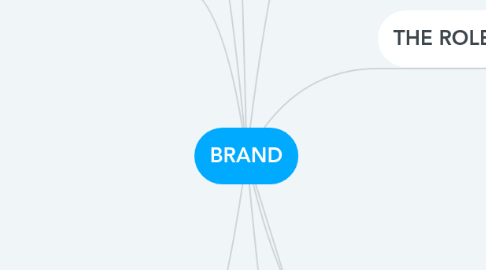
1. 3 DEFINITIONS
1.1. name,term,symbols,design or combination of them, intended to identify goods or service of one seller or group of sellers to differentiate them from those of competitors
1.2. a perceptual entity rooted in reality but reflecting the perceptions and idiosyncrasies of consumers
1.3. BRAND EQUITY - added value endowed products or service
2. DIFFERENCES
2.1. rational, functional, tangiable - related to product perfomance
2.2. irrational, emotional, symbolic, intangible - related to brand means and represents in abstract sense
3. HOW TO BRAND A PRODUCT?
3.1. BRANDING
3.1.1. creating differences between products.
3.1.2. endowing products and services with the power of a brand.
3.1.3. ORIGINS: craftpeople protected themselves with signs (trademarks) in medieval Europe.
3.2. DIFFERENTIATE
3.2.1. giving name, slogan, logo, charachter, spokepeople, signane
3.2.2. create mental structure by highliting atributes and benefits of the product.
3.2.2.1. product-related means
3.2.2.2. nonproduct-related means
4. ADVANTAGES OF STRONG BRAND
4.1. FOR CONSUMERS
4.1.1. greater loyalty
4.1.2. less vulnerability to marketing crises
4.1.3. less vulnerability to competitive marketing actions
4.1.4. more elastic consumer response to price decreases
4.1.5. larger margins
4.1.6. more inelastic consumer response to price increases
4.1.7. improves perceptions
4.2. FOR FIRMS
4.2.1. greater trade cooperation
4.2.2. possible licensing opportunities
4.2.3. improved employee recruting and retention
4.2.4. increased marketing communication effectiveness
4.2.5. additional brand extension opportunities
4.2.6. greater financial market returns
5. BRAND RESONANCE MODEL
5.1. ensuring customers identify the brand and associate it with specific class or ness
5.2. establishing tha brand meaning in customers'mind
5.3. eliciting the proper customers response in terms of brand-related judgments and feelings
5.4. converting customers' brand response to an intense, active loyalty
6. STRATEGIC BRAND MANAGMENT -
6.1. combination of designing and implemeting marketing programms and activities to build, measure, and manage brand to maximize their value.
6.2. 4 STEPS IN THE STRATEGIC MANAGMENT PROCESS
6.2.1. identifying and establishing brand positioning;
6.2.2. planning and implementing brand marketing;
6.2.3. making and interpreting brand perfomance;
6.2.4. growing and sustaining brand value deals with brand positioning.
7. THE ROLE OF BRANDS
7.1. FOR CUSTOMERS
7.1.1. simplify decision making
7.1.2. reduce risk becomes invaluable
7.1.3. help to identify the source or maker
7.2. FOR FIRMS
7.2.1. simlify product handling and tracing
7.2.2. help with inventory and accounting records
7.2.3. offers legal protection thorough patents, registered trademarks,
